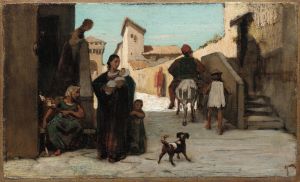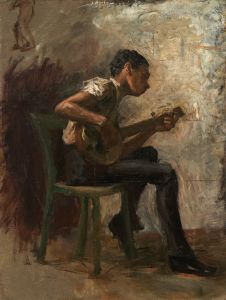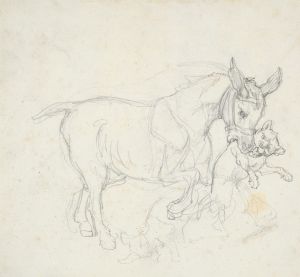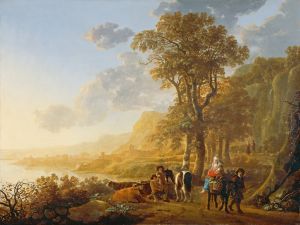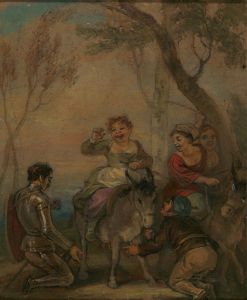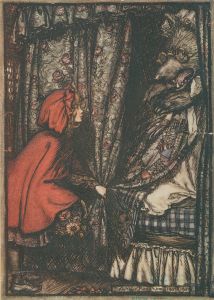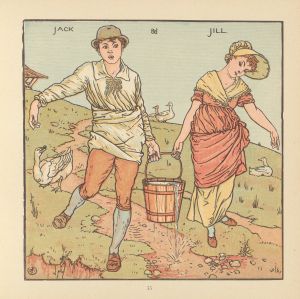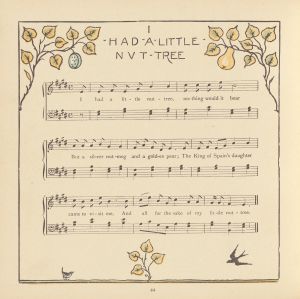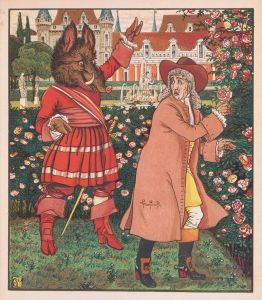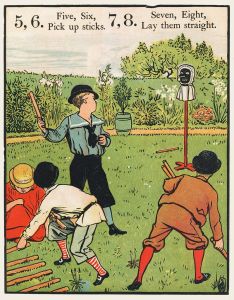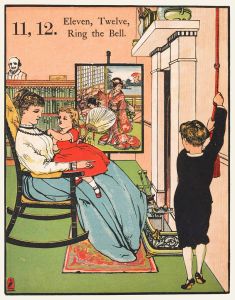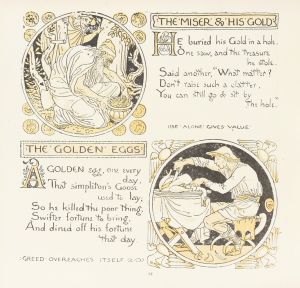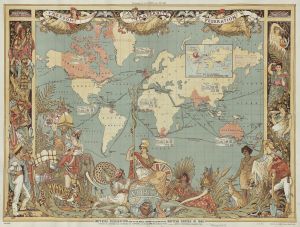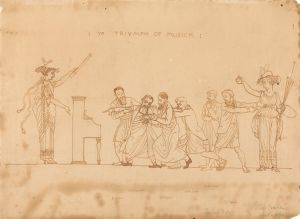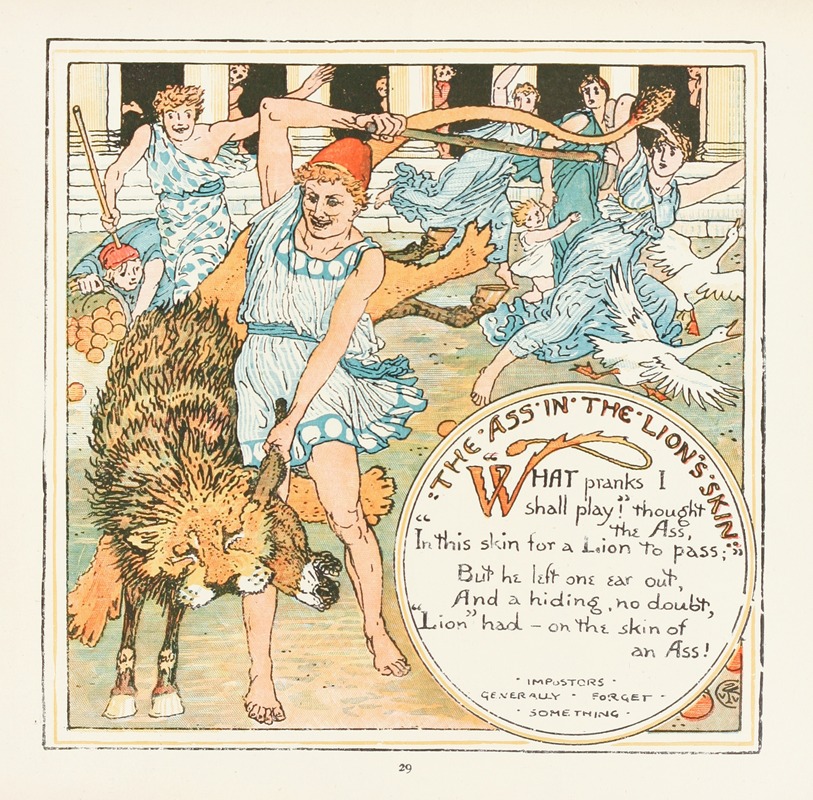
The Ass in the Lion’s Skin
A hand-painted replica of Walter Crane’s masterpiece The Ass in the Lion’s Skin, meticulously crafted by professional artists to capture the true essence of the original. Each piece is created with museum-quality canvas and rare mineral pigments, carefully painted by experienced artists with delicate brushstrokes and rich, layered colors to perfectly recreate the texture of the original artwork. Unlike machine-printed reproductions, this hand-painted version brings the painting to life, infused with the artist’s emotions and skill in every stroke. Whether for personal collection or home decoration, it instantly elevates the artistic atmosphere of any space.
Walter Crane's "The Ass in the Lion’s Skin" is an illustration that forms part of his work in the realm of children's literature and book illustration during the late 19th century. Walter Crane (1845–1915) was a prominent English artist and book illustrator, known for his contributions to the Arts and Crafts Movement and his innovative approach to children's book illustrations.
Crane's illustration of "The Ass in the Lion’s Skin" is based on one of Aesop's Fables, a collection of stories attributed to Aesop, a storyteller believed to have lived in ancient Greece. The fable tells the story of an ass that finds a lion's skin and decides to wear it, hoping to instill fear in other animals. Initially, the disguise works, and the other animals are frightened. However, the deception is uncovered when the ass, unable to suppress its natural bray, reveals its true identity. The moral of the story is often interpreted as a warning against pretending to be something one is not, as true nature will eventually be revealed.
Crane's work is characterized by its detailed and decorative style, which was influenced by his involvement in the Arts and Crafts Movement. This movement, which emerged in the late 19th century, emphasized traditional craftsmanship, the use of simple forms, and the beauty of natural materials. Crane's illustrations often featured intricate patterns and a harmonious use of color, reflecting these principles.
In "The Ass in the Lion’s Skin," Crane employs his signature style to bring the fable to life. His use of line and color creates a vivid and engaging image that captures the essence of the story. The illustration is likely to have been part of a larger collection of Aesop's Fables that Crane illustrated, as he was known for producing several such works during his career. These collections were popular in Victorian England and were appreciated for both their educational value and their artistic merit.
Crane's illustrations were not only intended for children but also appealed to adults, who admired the artistic quality and the moral lessons conveyed through the stories. His work in illustrating fables and fairy tales helped to elevate the status of children's literature, making it a respected and valued genre.
Walter Crane's contribution to the field of illustration and his role in the Arts and Crafts Movement have left a lasting impact on the world of art and design. His ability to blend narrative and visual art in a way that was both educational and aesthetically pleasing continues to be celebrated. "The Ass in the Lion’s Skin" remains a testament to his skill as an illustrator and his dedication to creating art that was accessible to a wide audience.





